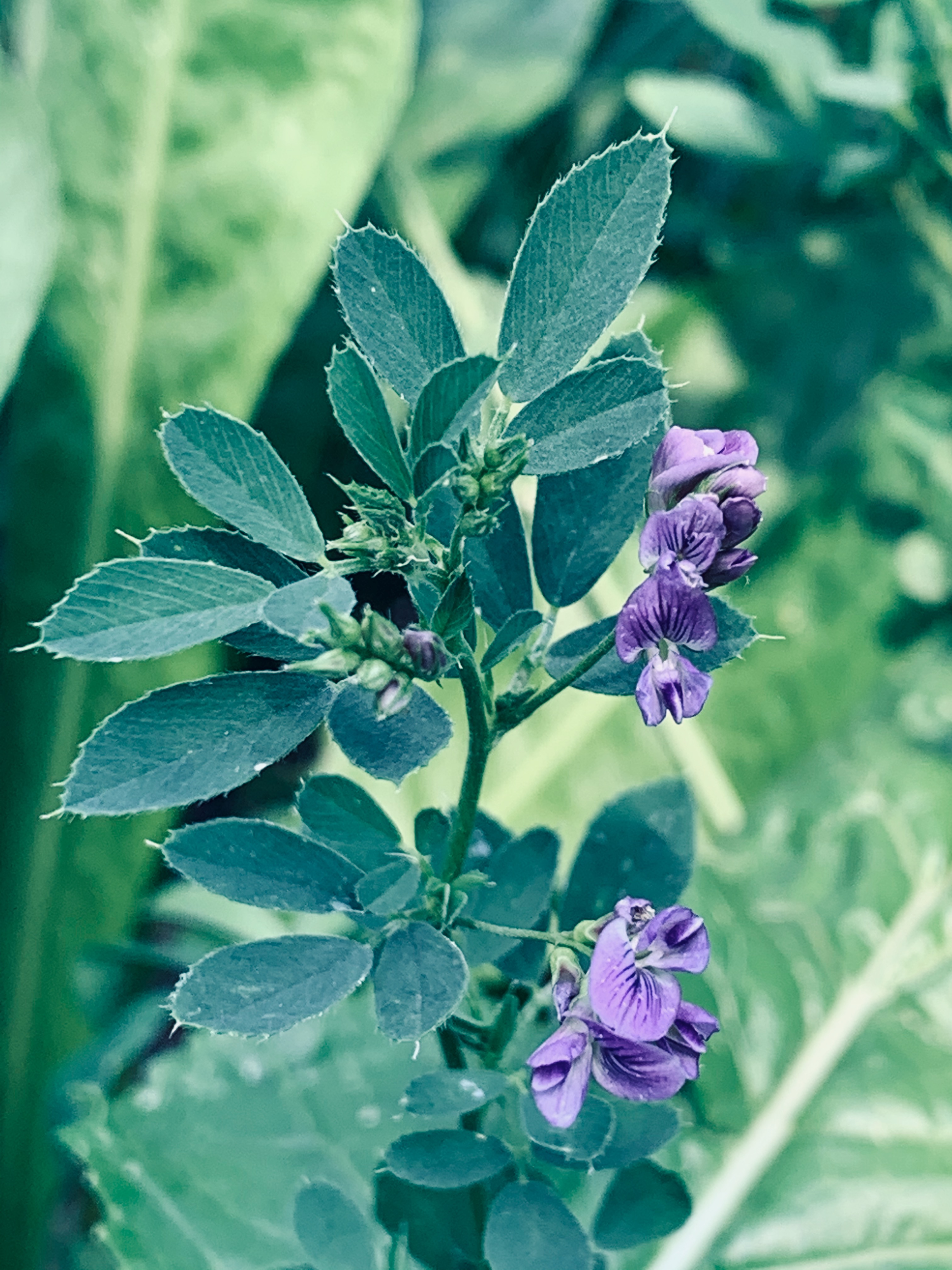| Scientific name: | Medicago sativa L |
| Cultivars: | Many: Conventional varieties, Round-up Ready varieties, and new varieties with reduced lignin (HarvXtra).
Dormancy 2 and 3 recommended for WI |
| Origin: | Persia, SW Asia |
| Growth Habit: | Erect, 2-3 ft tall |
| Life Cycle: | Perennial |
| |
| Use |
| |
| Production: | Fixes nitrogen Hay, pasture, and silage3 to 6 tons DM/acre |
| Nutritive Value: | High in protein (CP). High bloat potential |
| |
| Identification |
| |
| Seed Head: | Raceme with 20 to 30 flowers in cluster |
| Seed: | Kidney shaped, <1/4 inch, tan-brown in color
Inoculate with adequate N-fixing bacteria type (if seed is not coated or pre-inoculated). |
| Shoot: | Up to 35 inch, grow from woody crown |
| Leaf: | Trifoliolated (3 leaflts per leaf), serrated only on top 1/3 of leaflets |
| |
| Adaptation |
| |
| Soil: | Well drained, sandy, loose soils |
| pH: | 6.8-7.2 |
| Moisture: | Well-drained soils |
| Temperature: | Cool-season |
| Other: | |
| |
| Establishment - Management |
| |
| Seeding rate: | 13-18 lb/acre |
| Seed cost: | conventional: $4/lb; $50 to 60/acre; ~$200/50 lb bag
reduced lignin (HarvXtra): $12/lb; $150 to 180/acre; ~$600/50 lb bag |
| Planting date: | Spring-Fall |
| Planting depth: | < 1/inch on fine soils, 1/2inch on sandier soils |
| Frost seeding: | Not recommended |
| Fertilization: | Potassium and phosphorus, fertilize by recommendation of soil test |
| Grazing: | Should not be grazed below 2 inch. Graze at 25% bloom stage, or 5-6 weeks after initial grazing.Strip grazing is recommended.Can cause bloat |
| Hay: | Last cutting should occur at ~4 weeks before frost. Spring seedings should be cut after 60 days regardless of maturity (for weed control) and to possibly have a second harvest when at 10% blooming (usually by Sept 1). |
| |
| Notes |
Reduced lignin alfalfa has higher digestibility than conventional, and can be harvested 7 days to 10 days later and be at similar quality than conventional but 1st harvest should be done at the same time as conventional varietiesAdequate for lactating mares, competition horses, studs during breeding, race horses
On a seeding year, you can expect 1 or 2 cuttings |
| |
| Photos |
|

Alfalfa field (UWRF Mann Valley farm, NW Wisconsin)

Alfalfa trifoliate leaf with leaflet detail showing the top 1/3 serrated
|